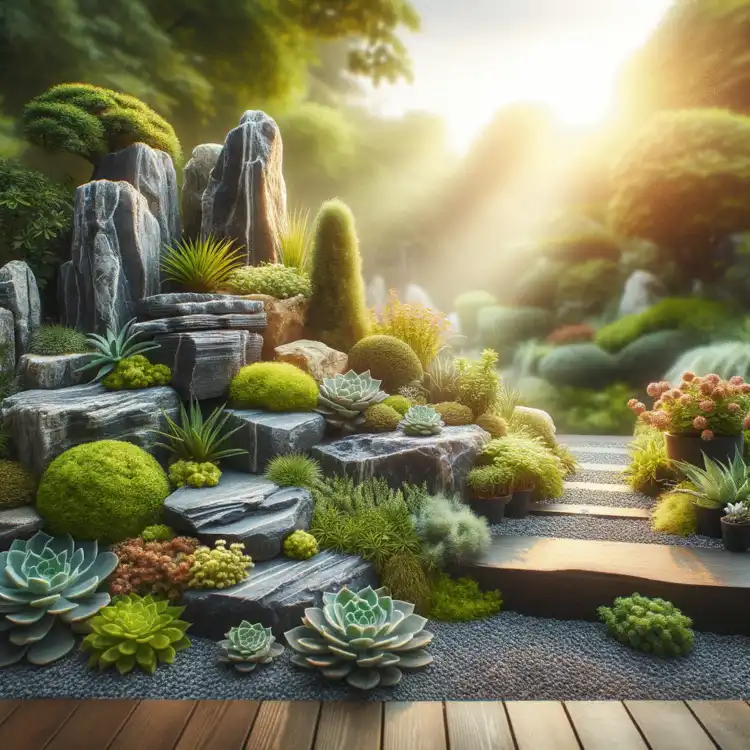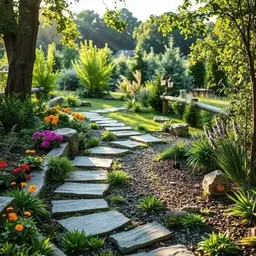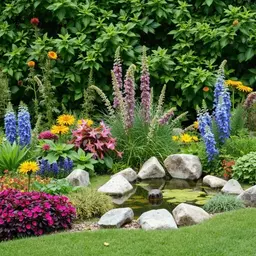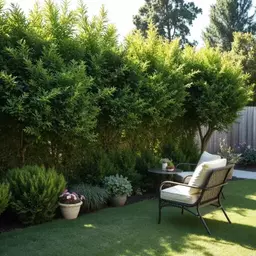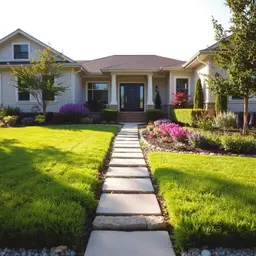Have you ever stepped into a garden that felt like a serene escape from the chaos of life? Creating a rock garden can offer just that, a captivating blend of natural beauty and personal expression. This article delves into the essential elements of rock garden creation, providing insights that every gardening enthusiast should know.
What You Will Learn
- Defining your goals is crucial; consider whether you want a tranquil retreat, a colorful display, or a wildlife-friendly habitat.
- Rock gardens are low maintenance and drought-resistant, making them ideal for various climates.
- Incorporating personal touches with unique stones and decorative elements can reflect your individuality in your garden design.
- Understanding plant varieties tailored to your climate enhances the diversity and sustainability of your rock garden.
- Engaging with fellow gardening enthusiasts through blogging or local clubs can inspire and motivate your gardening journey.
Benefits of Rock Gardens Across Different Climates
Rock gardens offer unique advantages depending on the climate in which they are situated. Below is a comparison of their benefits in various environmental conditions.
Climatic Benefits
Hot, Dry Climates
Conserves water and reduces evaporation.
Cold Climates
Rocks can retain heat, protecting delicate plants.
Moist Climates
Well-draining structures prevent water-logging, promoting healthy roots.
Understanding the Art of Rock Garden Creation
Creating a rock garden can be one of the most rewarding experiences for any gardening enthusiast, including myself! At Garden Plan Guide, I believe that understanding the basics is key to successful gardening. A rock garden not only adds beauty to your landscape but also provides a unique way to express your personal style and manage your outdoor space effectively.
Defining Your Goals for a Rock Garden
Before diving into the rocks and plants, it’s crucial to define what you want to achieve with your rock garden. Ask yourself: Do you want a serene spot for relaxation, a vibrant array of colors, or perhaps a wildlife-friendly habitat? Your goals will guide every decision you make—let’s explore some common reasons why homeowners choose rock gardens!
- Low Maintenance: Once established, rock gardens require less upkeep compared to traditional gardens.
- Drought Resistance: Ideal for dry climates, these gardens often feature plants that thrive with minimal water.
- Natural Aesthetic: Rock gardens blend beautifully with the natural landscape, creating a tranquil retreat.
Why Choose a Rock Garden for Your Landscape?
Choosing a rock garden can transform an ordinary yard into a stunning retreat! Not only do they serve as a striking visual element, but they also promote sustainability. The right combination of rocks and plants can enhance your garden's biodiversity while offering habitat for local wildlife. Plus, it’s a fantastic way to utilize sloped or uneven land—who knew gardening could be so practical?
The Benefits of A Rock Garden in Different Climates
Rock gardens are incredibly versatile, adapting to various climates with ease. For instance, in dry areas, you can select drought-resistant plants that flourish amid rocky terrain. Conversely, in more temperate zones, you can mix in moisture-loving plants that create a diverse ecosystem. Here are some benefits that rock gardens offer across different climates:
- Hot, Dry Climates: They conserve water and reduce evaporation.
- Cold Climates: Rocks can retain heat, helping to protect delicate plants.
- Moist Climates: Well-draining structures prevent water-logging, promoting healthy root systems.
Comprehensive Planning and Design for Your Rock Garden
Now that we’ve defined your goals and the benefits of a rock garden, let’s jump into planning and design! A thoughtfully designed rock garden can be a stunning focal point in your landscape. At Garden Plan Guide, I’m excited to share some of my favorite tips for choosing the perfect location and crafting a beautiful layout. For inspiration, you can explore resources that offer guidance on how to build rock gardens, providing practical advice and design ideas.
Quick Summary
Here's a brief recap of the key points discussed so far:
- Defining your goals is essential for creating a successful rock garden.
- Rock gardens offer low maintenance, drought resistance, and a natural aesthetic.
- Different climates provide unique opportunities for plant selection and design.
Frequently Asked Questions (FAQs)
- What are the main benefits of having a rock garden?
- Rock gardens are low maintenance, drought-resistant, and offer a natural aesthetic, blending beautifully with the landscape.
- How do I choose the right plants for my rock garden?
- Select plants that thrive in your climate, such as native, alpine, or succulent varieties, depending on the specific conditions of your area.
- What should I consider when planning the design of my rock garden?
- Consider your goals for the garden (relaxation, aesthetics, wildlife), choose a suitable location, and create a layout that incorporates various sizes and types of rocks.
- How can I make my rock garden unique?
- Incorporate personal touches such as unique stones, garden ornaments, sculptures, or container gardens to reflect your style.
- Where can I find inspiration and support for my rock gardening project?
- Engage with fellow gardening enthusiasts through blogs, social media, local gardening clubs, or online forums to share experiences and gain inspiration.
Incorporating Personal Touches and Advanced Techniques
Creating a rock garden is not just about placing stones and plants; it’s also about expressing your individuality! Personal touches can transform a simple garden into a stunning reflection of your style. Let’s dive into some fun customization ideas that will make your rock garden uniquely yours! One resource you might find helpful is Fine Gardening's article on building artistic rock gardens, which offers creative ideas for incorporating unique elements.
First, think about how you can adapt designs that suit your personal taste. Do you love a rustic look? Perhaps you might want to incorporate reclaimed wood or weathered stones for that charming, natural feel. Or, if you lean toward modern aesthetics, sleek lines and minimalistic stone arrangements might be just the ticket. Here are a few ideas to consider:
- Use unique stones like river rocks or quartz for a distinctive appearance.
- Incorporate garden ornaments or sculptures that resonate with your personality.
- Experiment with container gardening by adding colorful pots among the rocks.
Advanced Techniques for Experienced Gardeners
For those of you who are feeling more adventurous, advanced techniques can elevate your rock garden to new heights! By understanding specific plant varieties and their needs, you can create a thriving ecosystem. As someone who has dabbled in various plant selections, I can assure you that the right choices can make all the difference!
When choosing plant varieties, consider the unique conditions of your area. Here’s a simple list of plant categories to explore:
- Native plants: They thrive in local conditions and require less maintenance.
- Alpine plants: Perfect for rocky terrains, they can withstand harsh climates.
- Succulents: Low water needs make them ideal for dry rock gardens.
Next, let’s talk about rock arrangements! Arranging rocks in layers can create depth and visual interest. Try to use varying sizes and shapes to mimic natural formations found in the wild. Remember, the more you play with textures and colors, the more dynamic your garden will become! For further guidance on planning and building your rock garden, Gardeners HQ offers a comprehensive guide.
Encouraging Engagement and Sharing Experiences
Now that you’ve invested time and creativity into your rock garden, it’s time to share your journey with others! Engaging with fellow gardening enthusiasts can provide inspiration and encouragement. I’d love to hear your stories and see your transformations on Garden Plan Guide! Sharing personal experiences can create a vibrant community of learners eager to support each other.
Consider inviting testimonials from friends or family who have seen your garden evolve. Here are some ways to engage:
- Start a blog or social media account dedicated to your gardening projects.
- Participate in local gardening clubs or online forums.
- Host a garden tour for friends to showcase your hard work!
Final Thoughts on Creating Your Rock Garden
As we wrap up our exploration of rock gardening, remember to summarize the key steps we've covered. From incorporating personal touches to embracing advanced techniques, each decision contributes to your garden's charm. The journey might seem overwhelming at first, but I assure you that each moment spent crafting your rock garden will be rewarding!
So, whether you’re a seasoned gardener or just starting out, I encourage you to take that leap and begin your rock garden project! You never know what beautiful oasis you might create. Ready to get started? Join the conversation on Garden Plan Guide and share your thoughts or experiences below!
Recap of Key Points
Here is a quick recap of the important points discussed in the article:
- Define Your Goals: Establish the purpose of your rock garden, whether for relaxation, aesthetics, or wildlife support.
- Choose the Right Plants: Select plants that thrive in your climate, including native, alpine, and succulent varieties.
- Utilize Unique Stones: Incorporate various types of stones and creative arrangements to enhance visual appeal.
- Incorporate Personal Touches: Add elements like ornaments or container gardens to reflect your personal style.
- Engage with the Community: Share your gardening journey through blogs, social media, or local clubs to inspire and connect with others.
- Advanced Techniques: For experienced gardeners, explore layering rocks and understanding plant varieties for a thriving ecosystem.

